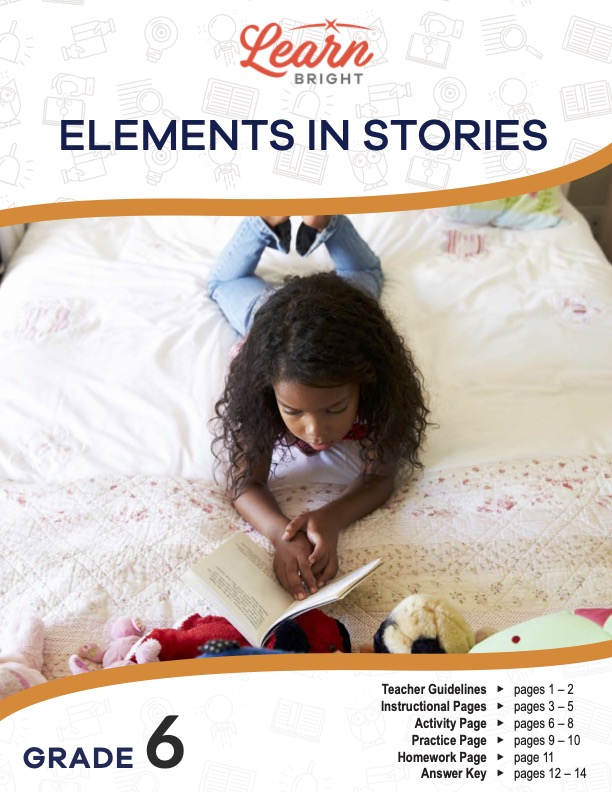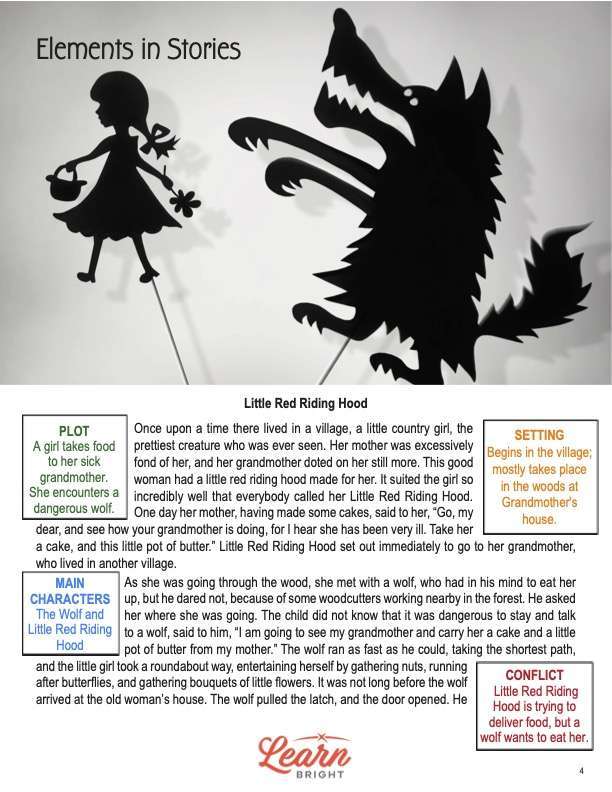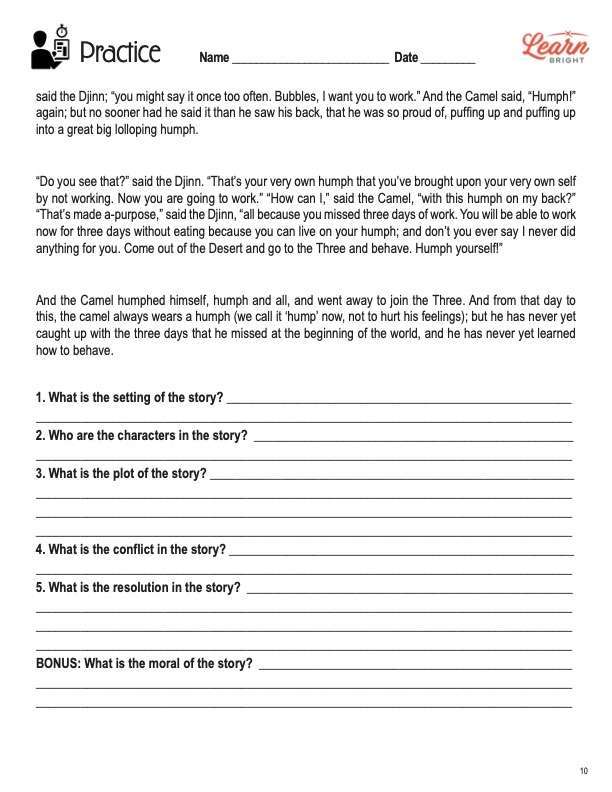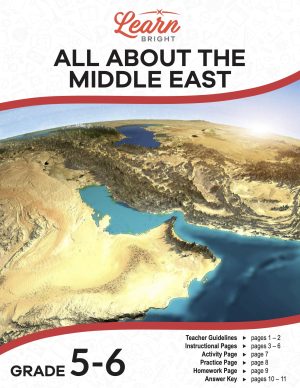Description
What our Elements in Stories lesson plan includes
Lesson Objectives and Overview: Elements in Stories teaches students how to identify the five main elements of a story and how they relate. These five elements are plot, characters, setting, conflict, and resolution. The lesson shows how deconstructing a story by its elements improves students’ grasp of the story. It defines three more elements that stories also contain: exposition, rising or falling action, and turning point. However, students will learn to focus on the main elements first.
This lesson presents the material in a unique way: in story format. You will basically read a story in order to teach your students about story composition. The lesson lists the eight elements of a story but marks which ones students should focus on. After the initial story, you will read “Little Red Riding Hood” to the class. Throughout the story, you can stop and explain the five main elements as they come up.
The activity, practice, and homework worksheets provide a lot of chances for students to show what they’ve learned.
ELEMENTS IN STORIES ACTIVITY
The activity requires that students read a story and complete a graphic organizer. This tool is a way of ordering the elements. Students will write in details from the story that relate to the proper element. Before you begin the activity, you can review how to fill in the graphic organizer correctly. Review the answers with your students to make sure they grasp the concept.
STORY PRACTICE WORKSHEET
The practice and homework sheets are related. The practice requires students to read the story How the Camel Got Its Hump, by Rudyard Kipling. There are five questions at the end for students to answer. There is also a bonus question: What is the moral of the story?
POEM HOMEWORK ASSIGNMENT
Instead of reading the story, students will get to read the poem version of How the Camel Got Its Hump. Also written by Rudyard Kipling, the poem illustrates the same ideas as the short story. Students will answer a couple of questions at the end, one of which is defining the meaning of the poem. This is similar to the bonus question from the practice. Therefore, these two answers may be the same or nearly the same.









